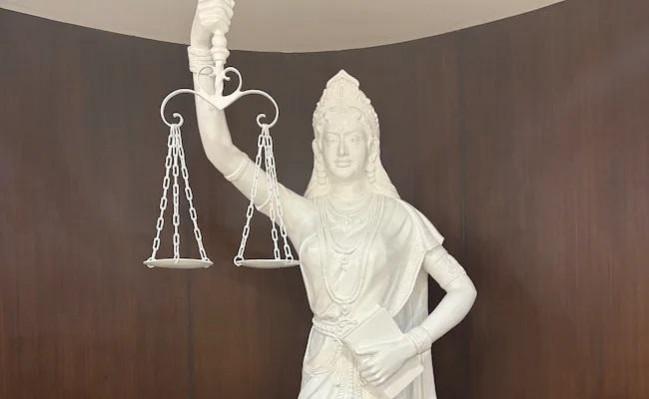
The statue of Lady Justice in the judges' library of the Supreme Court of India has undergone a transformation. The statue, which has long been a symbol of justice, now holds a copy of the Indian Constitution in place of a sword, and the blindfold, traditionally worn to signify impartiality, has been removed. This change, which took place under the tenure of the incumbent Chief Justice of India (CJI), D.Y. Chandrachud, is a powerful symbol of the evolving nature of justice in the country.
Historically, the blindfold worn by Lady Justice was a symbol of equality before the law, suggesting that justice should not be influenced by the status, wealth, or power of the parties involved. The sword she held was a symbol of authority and the capacity to punish injustice. However, these symbols, deeply rooted in colonial influences, have been replaced in a bid to shed the colonial imprint and traditional attributes.
The new Lady Justice, holding the Indian Constitution, signifies that the law in the country sees everyone equally, as mandated under the Constitution. This change is a clear departure from the colonial-era penal code, replaced with the Bharatiya Nyaya Sanhita.

The might of the Constitution, not of the sword, now prevails in the justice delivery process. The removal of the blindfold is a significant change. It signals that the law in the country is not blind and does not merely symbolise punishment. This change is a reflection of the evolving understanding of justice, which is not just about punishment, but also about understanding the realities of society and ensuring fairness.
Despite these changes, the scales of justice in the right hand of Lady Justice have been retained. These scales symbolize a societal balance and the significance of careful consideration of facts and arguments from both sides before arriving at a verdict. This retention underscores the importance of balance and fairness in the judicial process.
These changes to the statue of Lady Justice were not the only significant events to take place under the tenure of CJI Chandrachud. Last month, President Droupadi Murmu unveiled the new flag and insignia of the Supreme Court to commemorate the 75th year of its establishment. This was another step towards shedding colonial influences and establishing a distinct Indian identity.
Under CJI Chandrachud's tenure, the Supreme Court also began live-streaming proceedings of the Constitution Bench on YouTube and used artificial intelligence and natural language processing technology for live transcription of such hearings of national importance. The judicial hearings in the NEET-UG matter and R.G. Kar Medical College and Hospital suo moto case garnered huge public views, indicating the increasing transparency and accessibility of the judicial process.
This transformation of Lady Justice is not an isolated event. It is part of a broader trend of countries reevaluating and redefining their symbols of justice. For instance, in 2017, the statue of Lady Justice in Bangladesh was removed from the Supreme Court premises following protests from religious groups. It was later reinstalled in a different location, reflecting the ongoing debates about the representation of justice in society.

















